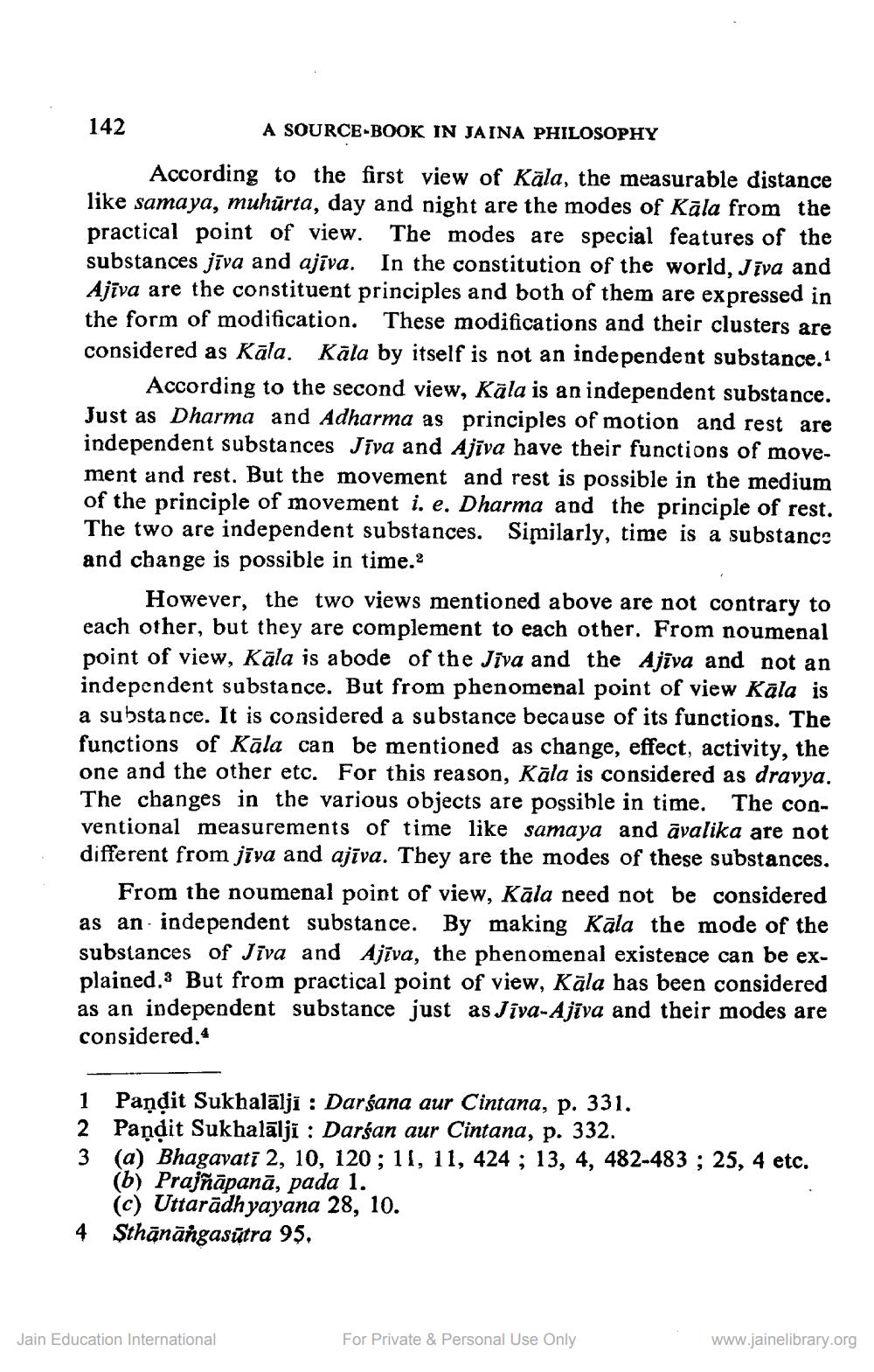________________
142
A SOURCE-BOOK IN JAINA PHILOSOPHY
According to the first view of Kala, the measurable distance like samaya, muhurta, day and night are the modes of Kāla from the practical point of view. The modes are special features of the substances jīva and ajīva. In the constitution of the world, Jiva and Ajiva are the constituent principles and both of them are expressed in the form of modification. These modifications and their clusters are considered as Kāla. Kala by itself is not an independent substance.1
According to the second view, Kala is an independent substance. Just as Dharma and Adharma as principles of motion and rest are independent substances Jiva and Ajīva have their functions of movement and rest. But the movement and rest is possible in the medium of the principle of movement i. e. Dharma and the principle of rest. The two are independent substances. Similarly, time is a substance and change is possible in time.2
However, the two views mentioned above are not contrary to each other, but they are complement to each other. From noumenal point of view, Kala is abode of the Jiva and the Ajiva and not an independent substance. But from phenomenal point of view Kala is a substance. It is considered a substance because of its functions. The functions of Kala can be mentioned as change, effect, activity, the one and the other etc. For this reason, Kala is considered as dravya. The changes in the various objects are possible in time. The conventional measurements of time like samaya and avalika are not different from jīva and ajīva. They are the modes of these substances.
From the noumenal point of view, Kala need not be considered as an independent substance. By making Kala the mode of the substances of Jiva and Ajiva, the phenomenal existence can be explained. But from practical point of view, Kala has been considered as an independent substance just as Jiva-Ajīva and their modes are considered.
1 Pandit Sukhalālji: Darśana aur Cintana, p. 331.
2 Pandit Sukhalālji : Darśan aur Cintana, p. 332.
3 (a) Bhagavatī 2, 10, 120; 11, 11, 424; 13, 4, 482-483; 25, 4 etc. (b) Prajñāpanā, pada 1.
(c) Uttaradhyayana 28, 10.
4 Sthānangasūtra 95.
Jain Education International
For Private & Personal Use Only
www.jainelibrary.org




